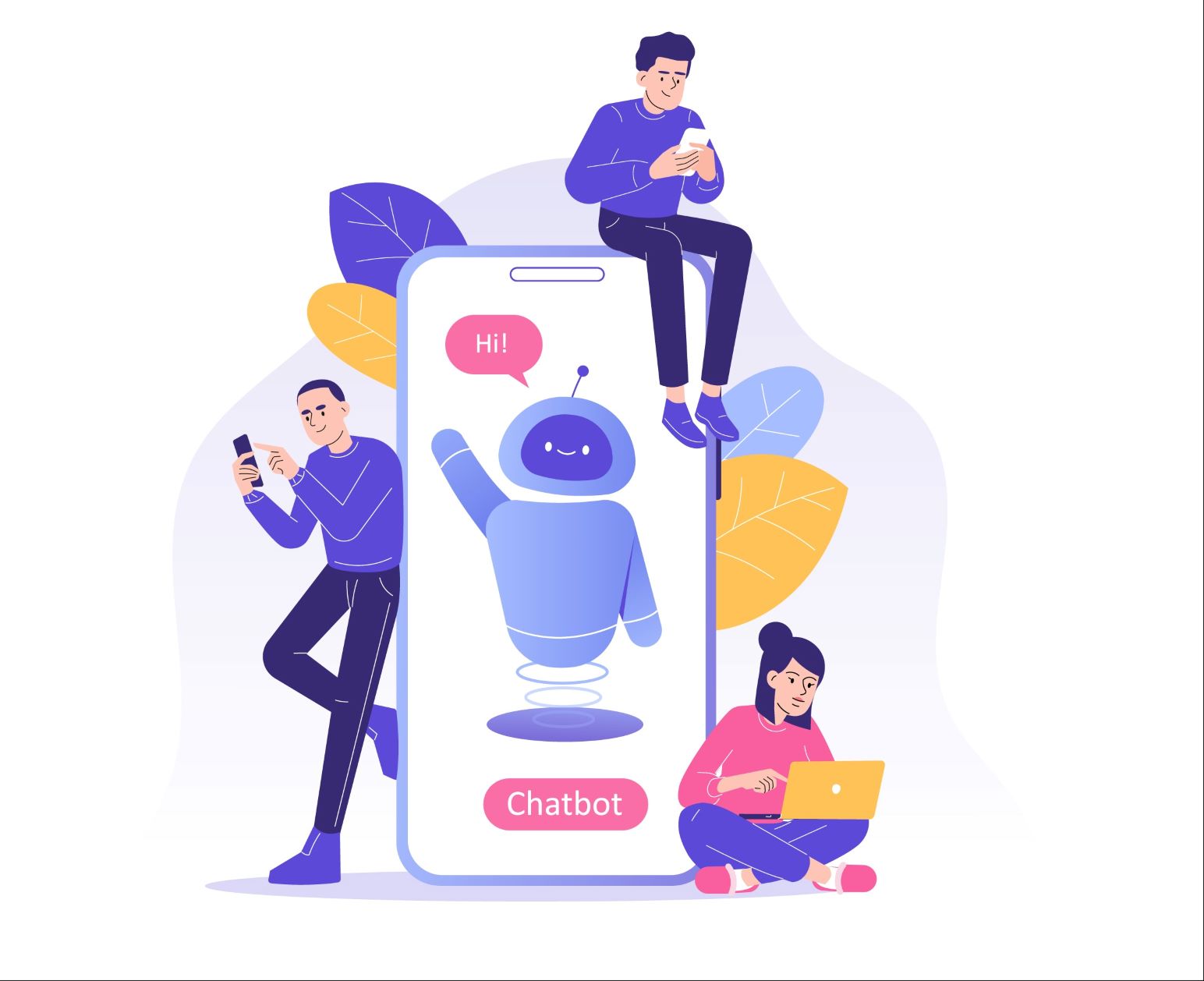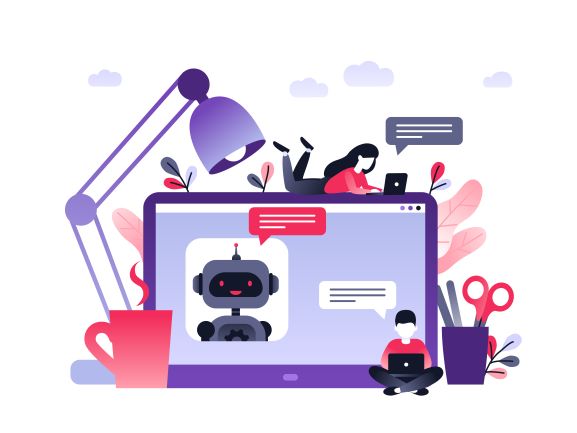It’s impossible to envision customer service without chatbots, which are currently the hottest innovations in customer service. Approximately half of the medium and large-sized companies will have deployed them by 2021, and 85% of customer service interactions will take place with digital assistants.
Technological advancements continue to transform interactive experiences across all types of communications, changing the benefits dramatically. Businesses are becoming more complex in their efforts to provide better customer experiences as they adopt digital transformation. The next few years will see the use of customer support chatbots and other conversational applications redefine digital channels.
Pre-programmed brand-specific or industry-specific chatbots can comprehend information and terms that are relevant to the brand. There is a great advantage in that it is preconfigured to handle common customer requests for a particular industry. Analysts report that despite understanding the potential impact AI can have on businesses, enterprises have trouble prioritizing investments and developing plans for integrating AI.
In sales, service, and marketing, chatbots facilitate customer retention and satisfaction through personalized experiences and communication. Furthermore, chatbots can also help to reduce inbound customer calls and offer organizations the chance to achieve substantial business value instantly by automating tasks within sales or service centers.
Chatbots, however, can be more or less effective in certain situations. The capabilities of chatbots make them capable of impacting your company’s costs as well as the experiences of your customers in a big way.
Five Characteristics of Customer Support Chatbots
You can achieve your goals with the five important characteristics listed here, regardless of whether you develop your support chatbot in-house or hire a developer. It is important to determine whether the tool you’re considering can be used simply even if it supports certain features in theory. Several of these features are supported by chatbot platforms, but others require workarounds and inventiveness in order to work. With proper design and programming techniques, chatbots can deliver all the benefits they promise and avoid their drawbacks.
1. The ability to customize a brand
The customer support chatbot can be customized to fit your brand with features that allow you to change its text and style. A blog for entrepreneurs that helps them use chatbots for marketing, Chatimize, is featured on Joren Wouters’ list of basic brand customizations. These customizable features aren’t always available in website widgets. Unlike Facebook Messenger, for instance, conversations aren’t possible directly on your website with Manychat. Chatfeed, a no-code, low-code chatbot tool, is one of many leading chatbot tools that take this approach.
Make sure the chatbot you choose supports native website widgets so that you can customize it for your brand. To maximize the effectiveness of chatbots, Outters suggests using native widgets. A bot should be customized for your brand’s ethos, says Gillian McCann, Head of Development for Workgrid’s Artificial Intelligence and Cloud Services. To determine the level of customization offered by a brand, a decision-maker should answer the following questions:
- When your company or department is on the phone, how do you hope it sounds?
- Customer personas versus employee personas: who are your company’s customers?
- Do you envision a formal or informal personality as well as a domain or user persona?
McCann described the answers to these questions as a conversational strategy that can help a company determine the amount of customization they need when making buy versus build decisions. Regardless of how your chatbot is designed, use a style guide to ensure it follows your brand’s or business’s conversational style.
2. Live chat feature
Humans are still the only ones who can reason and troubleshoot as effectively as chatbots. Customer service representatives should be available for immediate assistance. The customer won’t feel like their time is not valued when you don’t take them in circles or ask them unrelated or redundant questions.
A customer cannot be transferred from an automated system to a human one. In addition to the customer’s name, identifying information, and a record of their conversation with the chatbot, including the solutions offered, the customer service agent should also receive all the information the chatbot exchanged with the customer. As a result, we will not be willing to accept anything less, since we would need the customer to repeat information they have shared already. The agent is not only provided with information about the case but they are also prevented from suggesting further resolution steps.
Due to high chat volumes or outside of normal business hours? Can’t get in touch with any of our representatives? It’s not a problem. Customer service agents should be able to set up a case for further follow-up by an automated customer support chatbot at a later time. If the customer is going to be contacted, be sure to tell them when that will happen. Reuters believes a chatbot can never succeed since it is never trained to answer questions that customers ask. If so, then a live chat is the only way to ensure that the user has an enjoyable experience.
Different methods can be used to accomplish this. There are times when specific departments or people can be targeted for a chat. Other times, you can only send it to a generic group without providing any context, so the user has to repeat their question.
3. Multi-functional
A chatbot can, in the best-case scenario, communicate with customers and contacts across multiple platforms, retrieve data, and even transfer relevant information to live support agents. Customer support Chatbots are one of the most useful features because of the ability to connect with users via popular social networks like WhatsApp, Facebook, and Instagram. It is suggested that you do research in order to determine which platform your customers prefer to use and prioritize tools that support those platforms.
Customizing chatbots on social media platforms and communication platforms has its own rules. Telegram does not have any restrictions regarding what kind of promotional messages you may send, unlike Facebook and WhatsApp. Additionally, on Facebook, you can upload pictures and buttons, whereas on WhatsApp you can only send texts.
It is critical that chatbots deal with differences among channels, said Wouters.
Most chatbot vendors are limited in the channels they work with, according to Reuters. ManyChat, for example, is a popular chatbot that works only with Facebook Messenger, SMS, and email. Xenioo, for example, can handle more but is less user-friendly than other chatbot builders.
Furthermore, companies should consider integrating chatbots with back-end systems. Jared Peterson, SAS’s director of advanced analytics, believes an organization’s software, external systems, and resources need to be easily integrated into a chatbot platform. Technical expertise is often required for enabling these features.
4. CRM Integration is crucial
Chatbots can be integrated comprehensively with Customer Relationship Management in an ideal scenario. As simple as changing a password is, and as complex as adopting a new name, real-time dealing is required. Moreover, the system connects workflows of all complexity levels, for example, one involving 15 steps and several systems. Your chatbot will lead to maximum acquisition, retention, and growth of customers for your business when it effectively manages current and potential customers.
Using it, you can easily change a password or plan a multi-application process that involves multiple applications operating simultaneously.
5. Prepared for the unexpected
It is important to verify that the chatbot scripts you submit can deal with misunderstandings or ambiguities. When misunderstandings occur, you can send your customers an error message instead of having to restart the conversation. We could also suggest questions or FAQs related to the subject matter. In addition, users should be able to change their minds and ask other questions without difficulty.
Customers can enter keywords and phrases and an artificial intelligence program will respond accordingly. The many linguistic possibilities in language limit chatbots’ understanding due to the subtle ways of expressing themselves. It is possible to teach them.
Final Verdict
We live in a world where robots exist. With the rise of chatbots in customer service over the last few years, they now assist agents in resolving customer issues. Through automation, customer service representatives will be able to do more of the mundane work and will be able to diagnose and resolve more problems over time.
As with any new tool used by customer service, chatbots are susceptible to underperformance without proper planning and intention. Its valuable and productive role can be quickly bolstered by taking a considerate approach and infusing it with the right traits. Companies are realizing that customer support chatbots can be integrated into their business in more and more ways.











2 comments